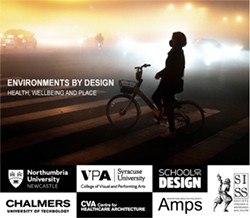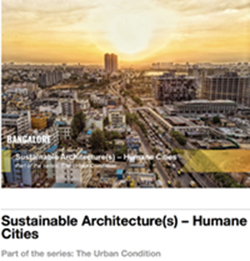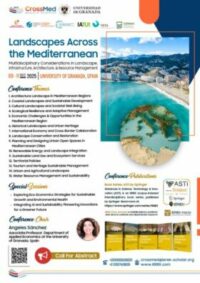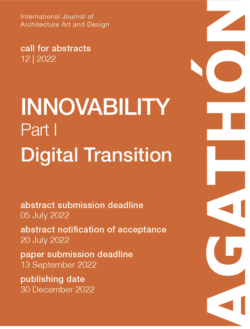ISSN (print): 2171-6897
ISSN (online): 2173-1616
Sep
2020
May
2021
Many inhabitants are not satisfied or happy in their cities. There is a lack of opportunities, the population is ageing, there is a lack of accessibility in public and private spaces, and inadequate housing conditions are rife. Different solutions are needed. To improve the lot of people, architecture must be improved. Every day, problems and new needs arise that compel us to modify, update, or extend that which has been built. This includes programmatic changes to buildings’ original purposes, new types of relationships and technologies that require adaptations for safety, accessibility and infrastructure in response to new modes of working, living and schooling. At this time, even in places with low population densities, it is difficult to think of new architectures that require more space, and much more so in better-established, densely populated areas, where pre-existing architecture is abundant, almost always outdated, and without heritage value. At the same time, we citizens need to transform and expand our public and private spaces, and to expand the architectures in our environments to welcome and care for their inhabitants, and to allow them to grow. We need a civil architecture that is efficient, but above all civic, moderated, collective, inclusive, informed, and educational. We need architectures that seek to bring substantial benefits. To expand is to grow in size or scope, in quality, and in ingenuity. The mission of architecture is to serve people, and that ambition must grow and be expanded. The topic proposed for PpA 24 aims to focus upon the in-depth knowledge of architectural transformational experiences carried out on previous buildings whether or not they are of heritage value, changes in architectures for existing sites that are not content merely with solving technical problems for new functional programmes, updating installations or repairing broken ones, and that take advantage of the need for expansion in order to achieve a symbiosis between pre-existing structures, modifications to them, and new extensions to afford them new value. It is clear that the priority is not the works of restoration and conservation of heritage; rather, their extensions are of interest when they are carried out in accordance with the above ideas.
We can study many successively modified and rehabilitated buildings through their heritage values, for example, museums, theatres, libraries, administrative buildings, educational centres, archaeological sites, industrial buildings, and even residential buildings. In these cases, the projects and works are usually awarded to well-qualified firms that carry out these works with varying degrees of success. Sometimes they implement important innovations, other times they aspire simply to rework and highlight that which has worked well on previous occasions. Some entities that are worth investigating in order to review the validity of this theory include the criteria and aims which guide what has already been built, and objective analyses and evaluations of successes and failures. Even more important is the volume of unprotected architectural works – some of great interest – which have undergone, with varying degrees of loss, rehabilitations that are very different to the benefits of the new, and which also merit critical reflection. Finally, there is a multitude of buildings of no special interest whose time for rehabilitation has also arrived. In these cases, the opportunities that any change holds are often disregarded, including possibilities for modernising, improving, and extending them, all of which might potentially transform mere buildings into works of architecture. Cities and buildings are repeatedly expanded and modernised, but even minor reforms allow them to grow and to expand, though with different and unequal results. Among all possible changes, those which are of particular interest include cases that allow us to observe extant architecture with certainty and clarity as agents that are responsible for producing profound transformations with aims to transcend that which existed beforehand.
Extended Architectures
Many inhabitants are not satisfied or happy in their cities. There is a lack of opportunities, the population is ageing, there is a lack of accessibility in public and private spaces, and inadequate housing conditions are rife. Different solutions are needed. To improve the lot of people, architecture must be improved. Every day, problems and new needs arise that compel us to modify, update, or extend that which has been built. This includes programmatic changes to buildings’ original purposes, new types of relationships and technologies that require adaptations for safety, accessibility and infrastructure in response to new modes of working, living and schooling. At this time, even in places with low population densities, it is difficult to think of new architectures that require more space, and much more so in better-established, densely populated areas, where pre-existing architecture is abundant, almost always outdated, and without heritage value. At the same time, we citizens need to transform and expand our public and private spaces, and to expand the architectures in our environments to welcome and care for their inhabitants, and to allow them to grow. We need a civil architecture that is efficient, but above all civic, moderated, collective, inclusive, informed, and educational. We need architectures that seek to bring substantial benefits. To expand is to grow in size or scope, in quality, and in ingenuity. The mission of architecture is to serve people, and that ambition must grow and be expanded. The topic proposed for PpA 24 aims to focus upon the in-depth knowledge of architectural transformational experiences carried out on previous buildings whether or not they are of heritage value, changes in architectures for existing sites that are not content merely with solving technical problems for new functional programmes, updating installations or repairing broken ones, and that take advantage of the need for expansion in order to achieve a symbiosis between pre-existing structures, modifications to them, and new extensions to afford them new value. It is clear that the priority is not the works of restoration and conservation of heritage; rather, their extensions are of interest when they are carried out in accordance with the above ideas.
We can study many successively modified and rehabilitated buildings through their heritage values, for example, museums, theatres, libraries, administrative buildings, educational centres, archaeological sites, industrial buildings, and even residential buildings. In these cases, the projects and works are usually awarded to well-qualified firms that carry out these works with varying degrees of success. Sometimes they implement important innovations, other times they aspire simply to rework and highlight that which has worked well on previous occasions. Some entities that are worth investigating in order to review the validity of this theory include the criteria and aims which guide what has already been built, and objective analyses and evaluations of successes and failures. Even more important is the volume of unprotected architectural works – some of great interest – which have undergone, with varying degrees of loss, rehabilitations that are very different to the benefits of the new, and which also merit critical reflection. Finally, there is a multitude of buildings of no special interest whose time for rehabilitation has also arrived. In these cases, the opportunities that any change holds are often disregarded, including possibilities for modernising, improving, and extending them, all of which might potentially transform mere buildings into works of architecture. Cities and buildings are repeatedly expanded and modernised, but even minor reforms allow them to grow and to expand, though with different and unequal results. Among all possible changes, those which are of particular interest include cases that allow us to observe extant architecture with certainty and clarity as agents that are responsible for producing profound transformations with aims to transcend that which existed beforehand.
WoS – Arts & Humanities Citation Index (A&HCI), Scopus, AVERY Index to Architectural Periodicals, Fuente Académica Premier (EBSCO), Art Source (EBSCO), REDALYC España y Portugal, REBID, Red Iberoamericana de Innovación y Conocimiento Científico, DOAJ, PROQUEST (Arts & Humanities, full text) Latindex | Dialnet, MIAR, Dulcinea, REDIB + 2018, EBSCOS+1.
There is no fee of any kind charged for publishing.










